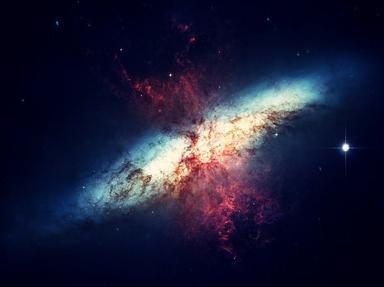Quiz Answer Key and Fun Facts
1. Nebulae (the plural of 'nebula') are not stars, though they're related to them. What are nebulae actually?
2. The word 'nebula' was originally used to say 'anything that is an area that doesn't exactly look solid'. Which was the first true nebula observed, located in the sword of a great hunter?
3. One of the classical categories of nebulae are H II regions. What goes on in these regions, something that causes the gas to ionize?
4. Some nebulae can be created due to a supernova. However, this hypothesis cannot be proven as humans have never seen a supernova.
5. Some nebulae are so dense and filled with diverse gasses that they absorb all emissions coming out of them. What are they called?
6. Reflection nebulae are a type of nebula that can be observed near some stars. Why are they called 'reflection' nebulae?
7. At the end of a star's life, it may often emit gasses and dust creating a nebula of ionized particles. Despite the name being given in error, what are these nebulae called?
8. Herbig-Haro objects are a type of nebula which occurs when newly formed proto-stars send out jets of material. What happens to these jets that causes them to ionize and become a nebulous object?
9. One type of short-lived nebula is the protoplanetary nebula. In this type of nebula, what gets ejected into space?
10. Rare, but, they have been found. In the Large Magellanic Cloud there exists a binary star, X-1, and a reflection nebula around it. What is in this X-1 that is lighting this nebula with X-rays?
Source: Author
LeoDaVinci
This quiz was reviewed by FunTrivia editor
rossian before going online.
Any errors found in FunTrivia content are routinely corrected through our feedback system.
